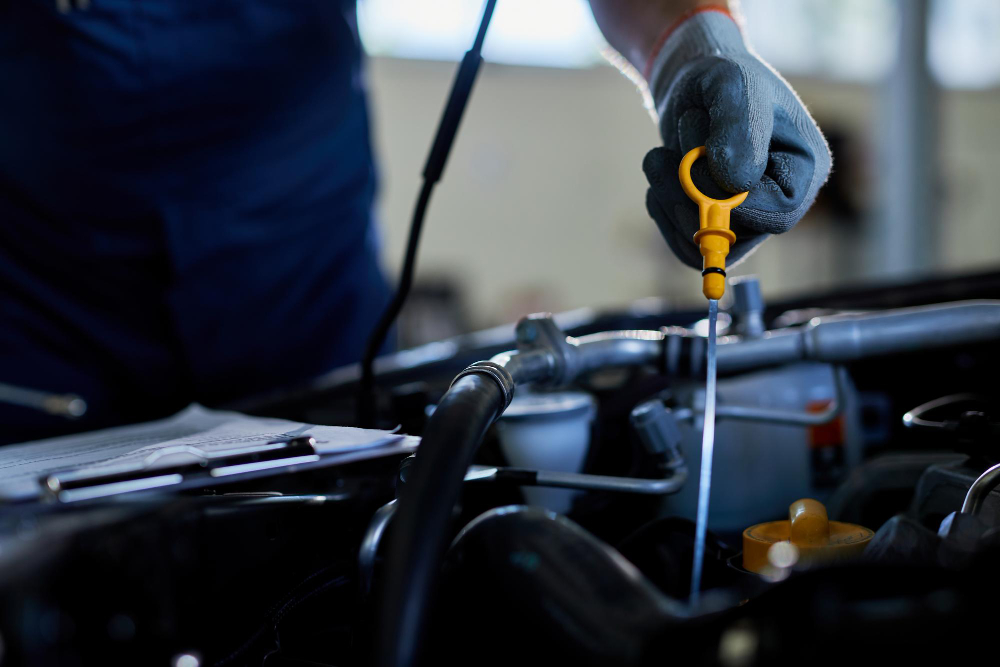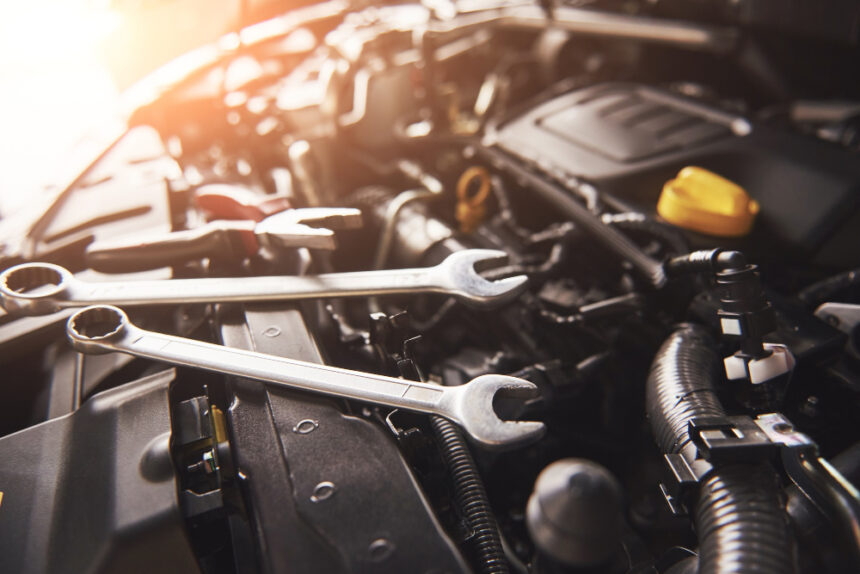Owning a car is a major investment, but it doesn’t end at the dealership. The real test begins with how well you maintain your vehicle over the years. While most car owners are familiar with basic maintenance tasks like oil changes and tire rotations, truly preserving your vehicle’s performance and longevity requires a more proactive approach.
In a world where the cost of repairs, fuel, and even insurance is continually rising, understanding and implementing a comprehensive car maintenance strategy can make all the difference in the long-term reliability of your vehicle. This guide goes beyond the routine checklist and dives deep into proactive car maintenance, empowering you to extend the life of your car and protect its value for years to come.
The Real Cost of Neglecting Car Maintenance
Many drivers underestimate how small maintenance issues can snowball into costly repairs. A neglected oil change can lead to engine sludge buildup, damaging internal components and reducing fuel efficiency. Worn brake pads, if left unchecked, can cause rotor damage, turning a simple $150 brake job into a $500 replacement. Something as simple as ignoring a check engine light can eventually result in thousands of dollars in repairs, not to mention the safety risks it poses on the road.
Neglect also affects your car’s resale value. Vehicles with patchy service records or visible signs of mechanical wear fetch significantly less on the used car market. With used car prices already soaring, staying on top of car maintenance isn’t just about reliability—it’s a smart financial decision that can offer long-term returns.
Understanding the Importance of Scheduled Maintenance
Every vehicle manufacturer provides a scheduled maintenance plan tailored to each make and model. These recommendations are not arbitrary—they’re backed by engineering data and testing, designed to keep the car running in peak condition. Scheduled maintenance includes vital services such as timing belt replacements, fluid checks, transmission services, and system diagnostics.
By adhering to this schedule, you’re essentially playing defense against breakdowns. You address issues before they become problems. Proactive car maintenance also allows mechanics to spot minor defects that might otherwise go unnoticed. A small coolant leak, for instance, can be spotted and sealed before it causes an overheating engine.
Going Proactive: Think Ahead, Not Just Now
The difference between routine and proactive car maintenance lies in foresight. While regular maintenance involves following the manufacturer’s manual, proactive maintenance includes anticipating the vehicle’s needs based on usage, climate, age, and mileage. For example, if you live in a region with harsh winters, it’s wise to get your battery tested before the season kicks in. Similarly, frequent short drives can cause faster oil degradation, prompting earlier changes than the suggested interval.
You can also tailor proactive maintenance based on the vehicle’s design flaws. Online forums, car enthusiast communities, and dealership reviews often reveal known issues in certain models. If your car is known for premature suspension wear or transmission quirks, staying one step ahead can prevent future frustrations.
Engine Health: The Heart of Your Vehicle

When it comes to car maintenance, nothing is more critical than your engine. Beyond regular oil changes, it’s vital to keep an eye on spark plugs, air filters, belts, and gaskets. Modern engines are more advanced but also more delicate. The smallest imbalance in fuel-to-air ratio or ignition timing can cause inefficiency or long-term damage.
Investing in high-quality engine oil, even if it’s slightly more expensive, can make a huge difference in performance and longevity. Using synthetic oils can help your engine withstand extreme temperatures and provide better lubrication. Regular inspection of the serpentine belt, which powers vital components like the alternator and water pump, can help you avoid sudden breakdowns.
Transmission: Your Vehicle’s Nervous System
Your car’s transmission controls power delivery from the engine to the wheels, making it an essential part of your vehicle’s functionality. Whether your car has an automatic or manual transmission, keeping it in top condition is key to smooth shifting and fuel efficiency.
For automatic transmissions, regularly checking and replacing the transmission fluid ensures proper lubrication and temperature regulation. Dirty or degraded fluid can lead to slipping gears, delayed response, or complete failure. Manual transmissions also need gear oil changes, especially in high-performance or older vehicles. Don’t wait until symptoms appear; transmissions are costly to replace, and proactive maintenance is your best protection.
Brake System Integrity: Safety Comes First
Brakes are not just about stopping power—they’re about safety. Your brake pads, rotors, and fluid should be inspected regularly. But proactive brake maintenance goes beyond replacements. Pay attention to how your brakes feel and sound. A soft pedal could mean air in the brake lines, while squealing sounds can indicate pad wear. Grinding might suggest more serious issues like caliper or rotor damage.
Brake fluid absorbs moisture over time, which can lead to brake fade or even corrosion in the lines. Flushing and replacing your brake fluid every 2 to 3 years can prevent this and ensure reliable braking, especially in emergencies.
Tire Care: Your First Line of Defense on the Road
Your tires are the only part of your car that touches the road, making their maintenance a priority. Regular tire rotations, alignments, and pressure checks ensure even tread wear and improve handling. But proactive tire maintenance also means inspecting for cracks, bulges, or embedded objects that could lead to blowouts.
Keeping your tires properly inflated improves fuel economy and reduces unnecessary wear. During season changes, switching between summer and winter tires can also prolong their lifespan and enhance safety. It’s wise to get your wheels balanced and aligned every 10,000 miles or if you notice your steering pulling in one direction.
Battery and Electrical System: Powering Reliability
Your car’s battery and electrical system power everything from ignition to infotainment. A dead battery is a common cause of breakdowns, especially during winter months. While most batteries last between 3 to 5 years, regular voltage tests can detect weakening cells early.
Corroded terminals or loose cables can lead to unpredictable failures. Cleaning the battery connections and ensuring they’re tight prevents poor electrical contact. Also, be aware of the alternator and starter performance. Dim lights, strange sounds during ignition, or warning lights on the dashboard could be early signs of electrical trouble.
Fluid Checks: More Than Just Oil
Your car contains several fluids that need regular inspection and replacement: engine oil, coolant, brake fluid, transmission fluid, power steering fluid, and windshield washer fluid. While oil and coolant get most of the attention, the others are equally vital.
Coolant, for instance, keeps your engine from overheating and prevents freezing in cold temperatures. Old or contaminated coolant can cause corrosion in the radiator or water pump. Similarly, dirty power steering fluid can affect your ability to turn the wheel smoothly.
Each of these fluids has a unique lifespan. Proactively flushing and replacing them based on mileage and conditions is smarter than reacting to performance issues later.
Cabin Comfort and Air Quality
Many car owners overlook the importance of the cabin air filter. This filter keeps dust, pollen, and pollutants from entering your car’s interior through the ventilation system. A clogged cabin air filter can reduce airflow, strain the HVAC system, and affect air quality.
Replacing the cabin air filter once a year (or more often in dusty regions) can enhance comfort and even boost fuel economy if your AC system works more efficiently. Also, keeping your HVAC system in good condition can prevent mold buildup, especially in humid climates.
Exterior and Undercarriage: Preserving More Than Just Looks
Maintaining the exterior of your vehicle isn’t just about aesthetics. Regular washing and waxing protect the paint from UV damage, bird droppings, road salt, and other corrosive substances. Road salt in particular, common in snowy climates, can corrode the undercarriage, leading to rust in critical areas like the frame, brake lines, and suspension components.
Frequent inspections of the undercarriage, especially during and after winter, can help identify early rust and allow for protective measures. Proactive application of rustproofing treatments can prevent expensive structural damage down the road.
Listen to Your Car: The Sound of Preventative Maintenance
Modern vehicles come equipped with sensors and alert systems, but your ears are still one of the best diagnostic tools available. Unusual noises—clicking, grinding, knocking, or whining—often indicate mechanical wear or misalignment. Instead of tuning them out or turning up the radio, pay attention and investigate early.
Even a slight change in how the car sounds, feels, or handles can be the first sign of a developing issue. Addressing it early not only saves money but can prevent sudden failures that put your safety at risk.
Keeping Records: The Power of Documentation
Keeping detailed maintenance records helps you stay on top of your vehicle’s health and proves invaluable when it’s time to sell. A well-documented service history can add thousands of dollars to your car’s resale value. It shows potential buyers that the car was well cared for and reduces their perceived risk.
You don’t need fancy software—a simple spreadsheet, physical folder, or even a notes app can suffice. Just be sure to log dates, services performed, mileage, and any parts replaced.
Choosing the Right Mechanic: A Partner in Longevity
Having a reliable, trustworthy mechanic can significantly impact how well your car is maintained. A skilled technician does more than perform basic services—they can offer insights into upcoming issues, suggest proactive measures, and work with you to keep costs reasonable.
Ask for certifications like ASE (Automotive Service Excellence), read reviews, and test out shops with small jobs before committing to major repairs. Building a relationship with a competent mechanic means having a partner who understands your car’s history and can provide customized care.
Driving Habits: How You Drive Matters
Your driving style can either extend or shorten the life of your vehicle. Aggressive acceleration, hard braking, and frequent short trips all contribute to accelerated wear and tear. Driving gently, maintaining consistent speeds, and avoiding potholes or curbs help reduce strain on your car’s systems.
Proactive drivers also avoid letting their car idle excessively, especially in winter. Modern engines don’t need long warm-up times, and extended idling can lead to carbon buildup and wasted fuel.
Embracing Technology: Diagnostic Tools and Apps
Technology has made car maintenance easier than ever. OBD2 scanners can read error codes and provide early warning signs of trouble. Mobile apps can track service schedules, alert you to recalls, and even connect you with certified repair shops nearby.
Investing in a basic scanner and using an app to track your vehicle’s health gives you more control and insight, making it easier to adopt a proactive maintenance mindset.
Conclusion: The Smart Way to Keep Your Car Running for the Long Haul
In an age where every dollar counts, proactive car maintenance is one of the smartest investments a driver can make. It’s more than just oil changes and tire rotations—it’s about understanding your car’s needs, staying one step ahead of wear and tear, and building habits that promote long-term reliability. From preserving your engine to protecting your resale value, the benefits of proactive car maintenance extend far beyond the garage.
By staying informed, listening to your vehicle, and taking preventative action, you can reduce breakdowns, enjoy smoother performance, and ultimately save money. Whether you’re driving a compact sedan or a rugged SUV, the principles of proactive maintenance remain the same: treat your car well, and it will return the favor mile after mile.

